Home> Company News> Mechanism of soybean protein processing and production
- AddressNo.4087 SHAHEXI ROAD, TIAOQIAO DISTRICT,JINAN,CHINA
- Factory AddressNo.4087 SHAHEXI ROAD, TIAOQIAO DISTRICT,JINAN,CHINA
- Worktime9:00-18:00
- Phone(Working Time)0531-85064681
- Phone(Nonworking Time)86-18660125156
- Fax0531-85064682
Mechanism of soybean protein processing and production
2018-11-29 13:53:42The R groups of amino acids in soybean proteins are different in structure, and there are 18 kinds of amino acids in total.
General proteins have four levels of structure, the first level of which is the peptide bond structure. Current studies have found that the structural characteristics of soybean proteins are shown in the secondary structure (helical structure) and the tertiary structure (the complex structure consisting of hydrogen bond, disulfide bond, hydrophobic bond, ionic bond, van der Waals force, etc.).
The peptide chain of soybean protein is mainly formed by the Angle of alpha-helix and beta in a disordered arrangement. The shape of soybean protein is spherical, and the center of the molecule is a hydrophobic nucleus formed by non-polar side chains. The surface is formed by polar side chains and has a strong hydrophilic structure.
Soybean protein molecules, some irregular sag have receive small properties of soybean protein is mainly used for extrusion cooking process on its hydration, namely its molecules on the surface of the particles amino (NH) 2, carboxyl (-cooh) group, the amino with hydrophilic groups (NH -) and so on, and moisture to make soy protein molecules become colloidal state.
In addition, the solubility and degeneration of soybean protein are also involvedTVP/soybean protein production lineIs reflected in.
Proteins are amphoteric electrolytes, so they dissolve in acidic, alkaline, and neutral solutions
. It was found that when the optimal dissolution environment of soybean protein was 6.5 pH, the protein in soybean hydrolyzed in water under the influence of acid, alkali and enzyme to generate amino acids.
The denaturation of soybean protein causes some influencing factors to change the secondary, tertiary and quaternary structure of the original molecule, and the shape of peptide chain to change, so that its properties or properties change simultaneously.
Such biopolymers as soy protein, which are squeezed by external forces at room temperature and pressure, will be separated into solid and liquid phases, which are incompatible.
However, under high temperature and pressure, the raw material system consisting of water, soybean protein isolate, defatted soybean powder and so on passes through the hopper, feeding, crushing, transportation and crushing device of the crushing deviceMicrowave sterilization machineryThe physical separation of solid and liquid followed by a "melting phase".
Under the environment of high temperature and high pressure, the hydrophilic groups of protein molecules hydrate with water. At the same time, protein molecules repel each other and make irregular Brownian motion, so that the material becomes a stable colloidal state from the solid-liquid separation state. This process is called "melting" process.
The melting of soy protein is a chemical reaction.
At the early stage of the processing process, the materials are first added to the mixer for mixing. At this time, the protein of soybean is a natural three-dimensional spherical aggregate, and the temperature gradually increases during the conveying stage. The secondary bonds of long molecular bonds (ionic bonds, disulfide bonds, van der Waals force, hydrogen bonds, etc.) break, and the linear structure between molecules becomes loose.
After extrusion and cooking, soybean protein is subjected to the action of molecular shear force. At a certain speed, protein molecular structure recombines to form continuous phase melt. When the temperature increases further, the force between soybean protein molecules increases to form non-covalent bonds.
There is a big difference between the structure of defatted soybean products and that of soybean protein isolate products. Firstly, soybean protein powder of soybean protein isolate presents amorphous spherical particles, and the tissue product after extrusion presents neat and dense fiber structure with uniform protein distribution.
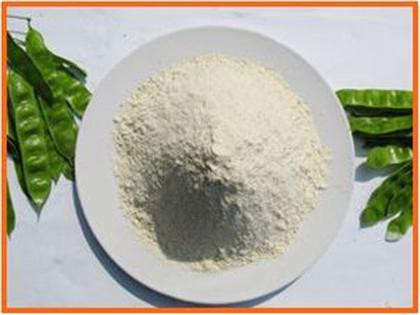
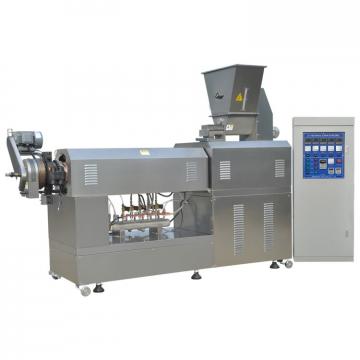 Factory Fruit and Vegetable Processing Machines/Quick Frozen Line/Food Processing Production Line for Daylily Production Line with High Output
Factory Fruit and Vegetable Processing Machines/Quick Frozen Line/Food Processing Production Line for Daylily Production Line with High Output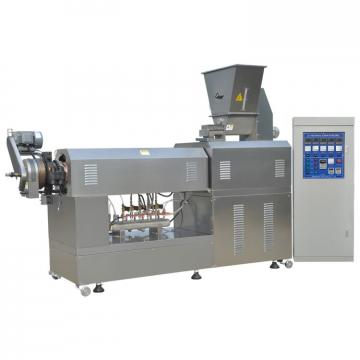 Factory Direct Sales PS Styrofoam Food Container Production Line
Factory Direct Sales PS Styrofoam Food Container Production Line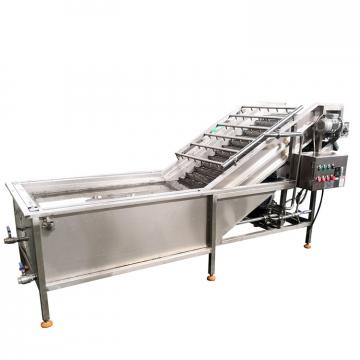 Complete Pure / Mineral Drinking Bottled Water Production Line Factory in Beverage / Food Area
Complete Pure / Mineral Drinking Bottled Water Production Line Factory in Beverage / Food Area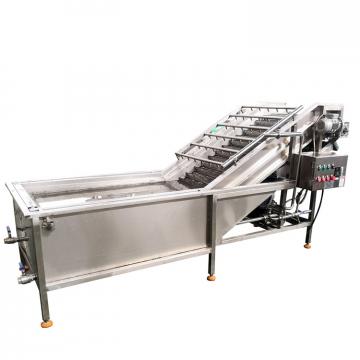 Cheetos Fried Food Production Factory Extruder Processing Line
Cheetos Fried Food Production Factory Extruder Processing Line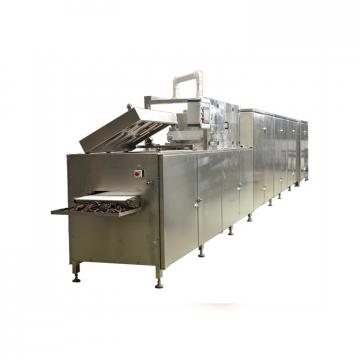 Automatic Mini Food Factory Macaroni Processing Line Pasta Production Line
Automatic Mini Food Factory Macaroni Processing Line Pasta Production Line
